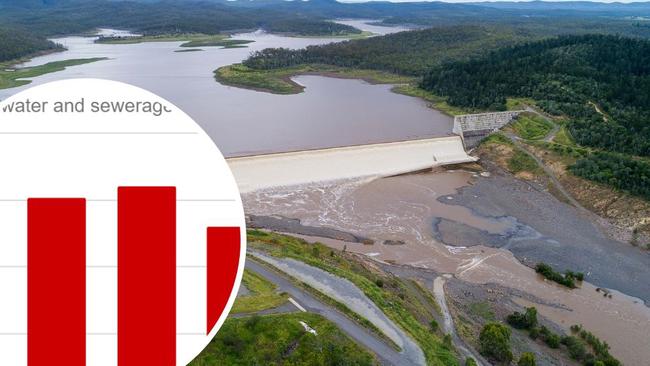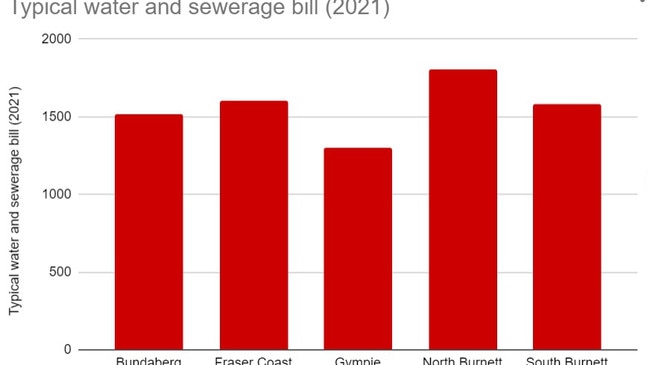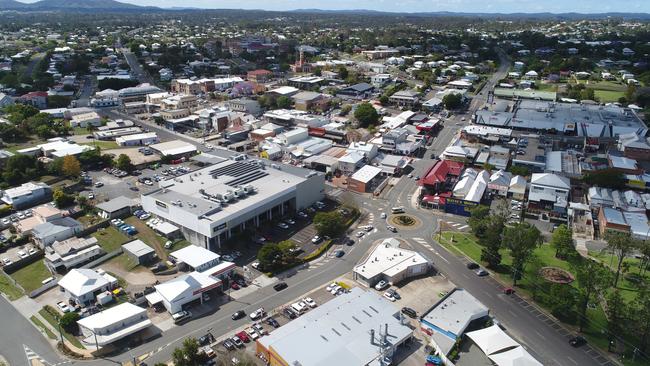How Wide Bay Burnett councils‘ water bills compare
New data on council water services across the Wide Bay and Burnett have revealed which parts of the region are paying top dollar for their water, and where residents are winning with cheaper prices.

Gympie
Don't miss out on the headlines from Gympie. Followed categories will be added to My News.
North Burnett residents are paying the highest water and sewerage bills across the Wide Bay and Burnett, but the price comes as the council itself forks out a significant sum to keep the rural service running.
The latest data available on the state government’s website reveal the “typical” annual residential water and sewerage bill for North Burnett residents in 2021 was $1808.25.
This was more than $200 higher than the typical water and sewerage bill for Fraser Coast residents.
Residents there were paying $1601.19 a year.
South Burnett residents forked out the third highest price for the connections at $1580.87, while Bundaberg residents paid $1520.41.
Gympie region residents had the cheapest typical water and sewerage bill at $1300.48.
While the cost to North Burnett ratepayers was high, the council was itself paying

‘Like everyone’s sister’: Heartbreak after loss of bottlo worker
The council was paying the most to keep its water running, with an average operating cost of $885.87 per connection.
Maintenance costs were through the roof, with the council spending $635.10 on routine and preventative work to keep the water flowing in 2021.
This was more than double the average maintenance cost of other small-sized councils across the state.
Operating costs can be influenced by the council’s location and climate, density and the age and condition of infrastructure.

The North Burnett, and the Cherbourg Aboriginal Shire Council, were the Wide Bay Burnett bodies not to get a positive return on the service in 2021.
These two councils had the shortest lengths of water mains too, with 11km of pipes laid across Cherbourg and 135km across the North Burnett.
‘Bone on bone’: Ex engineer’s agonising wait for surgery
This was compared to 1193km of water pipes across the Fraser Coast, 951km across Bundaberg, 604km in the South Burnett and 452km in Gympie.
Bundaberg residents drew the short straw when it came to taps drying up in 2021.
Its council recorded an average of 32.7 breaks per 100km of pipes, nearly double the breakage rate at South Burnett, triple the rate at Gympie, and more than five times the breakage rate on the Fraser Coast.
The increase was on the back of 173 breaks in the Bundaberg city scheme in 2021.
This surge was not isolated to that year. In 2020, the Bundaberg council reported 22 pipe breaks per 100km, compared to an average of 5.2 from 2016-2019.
There had been no more than 40 breaks reported in that scheme area in the four years prior.
The council’s own water service standards published online reveal the number of breaks should be less than 20 per 100km.
Breakage rates for small councils can be inflated due to the limited infrastructure in their regions (i.e. a council with 10km of mains and five breaks will return a rate of 50 per 100km).





